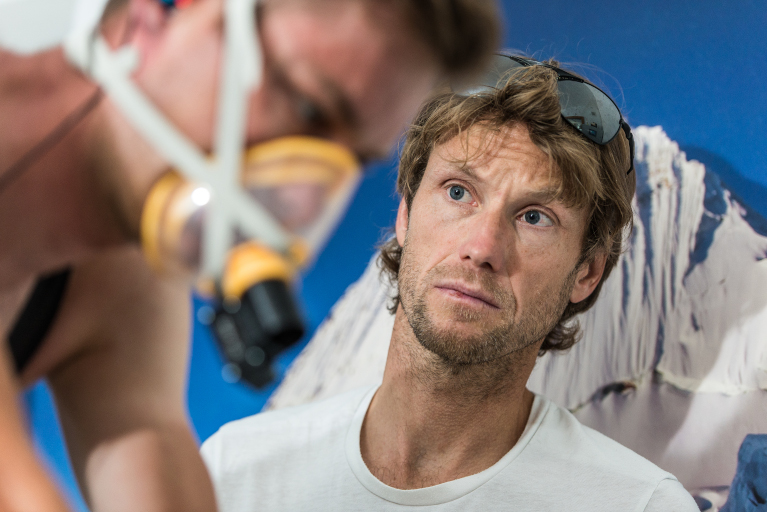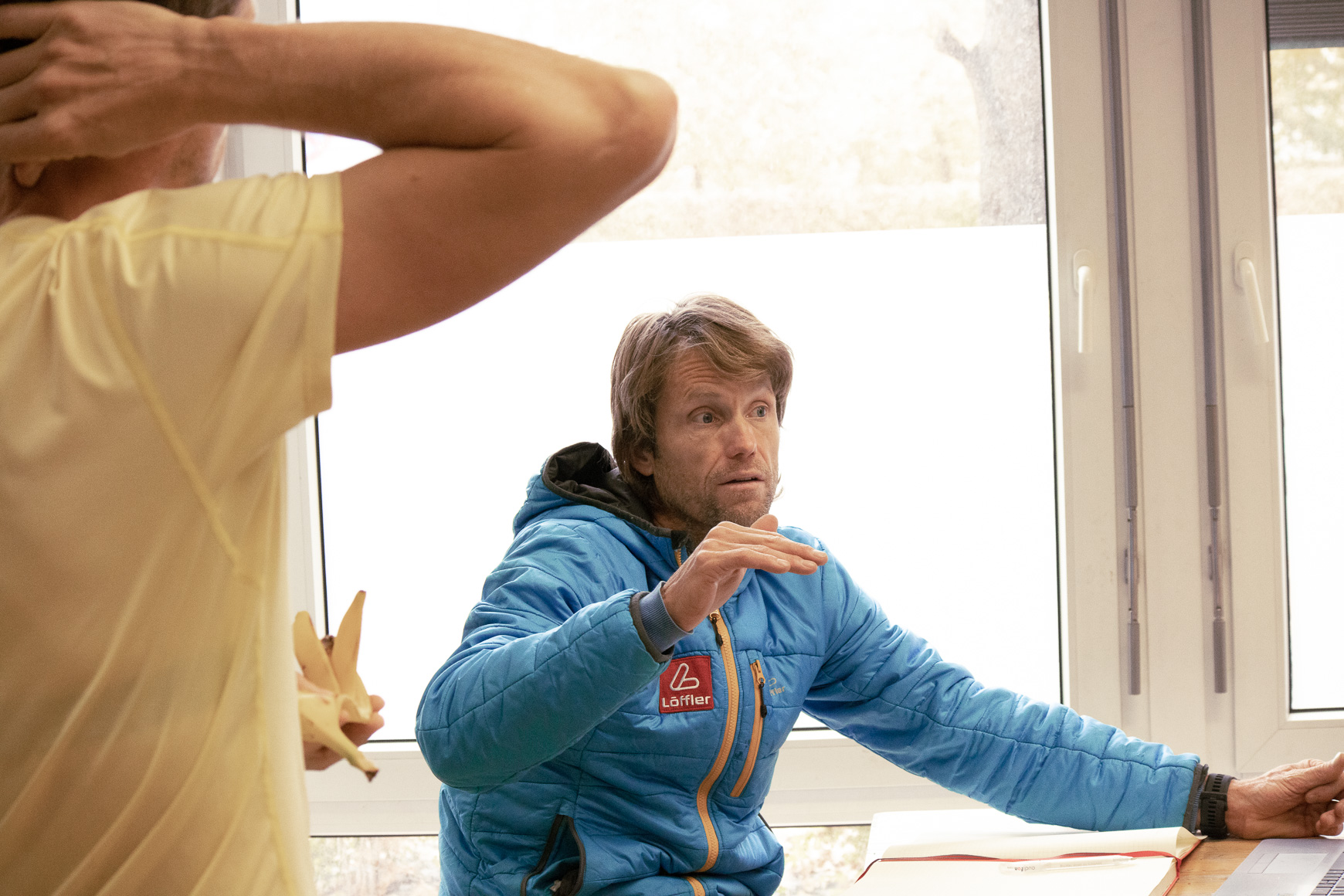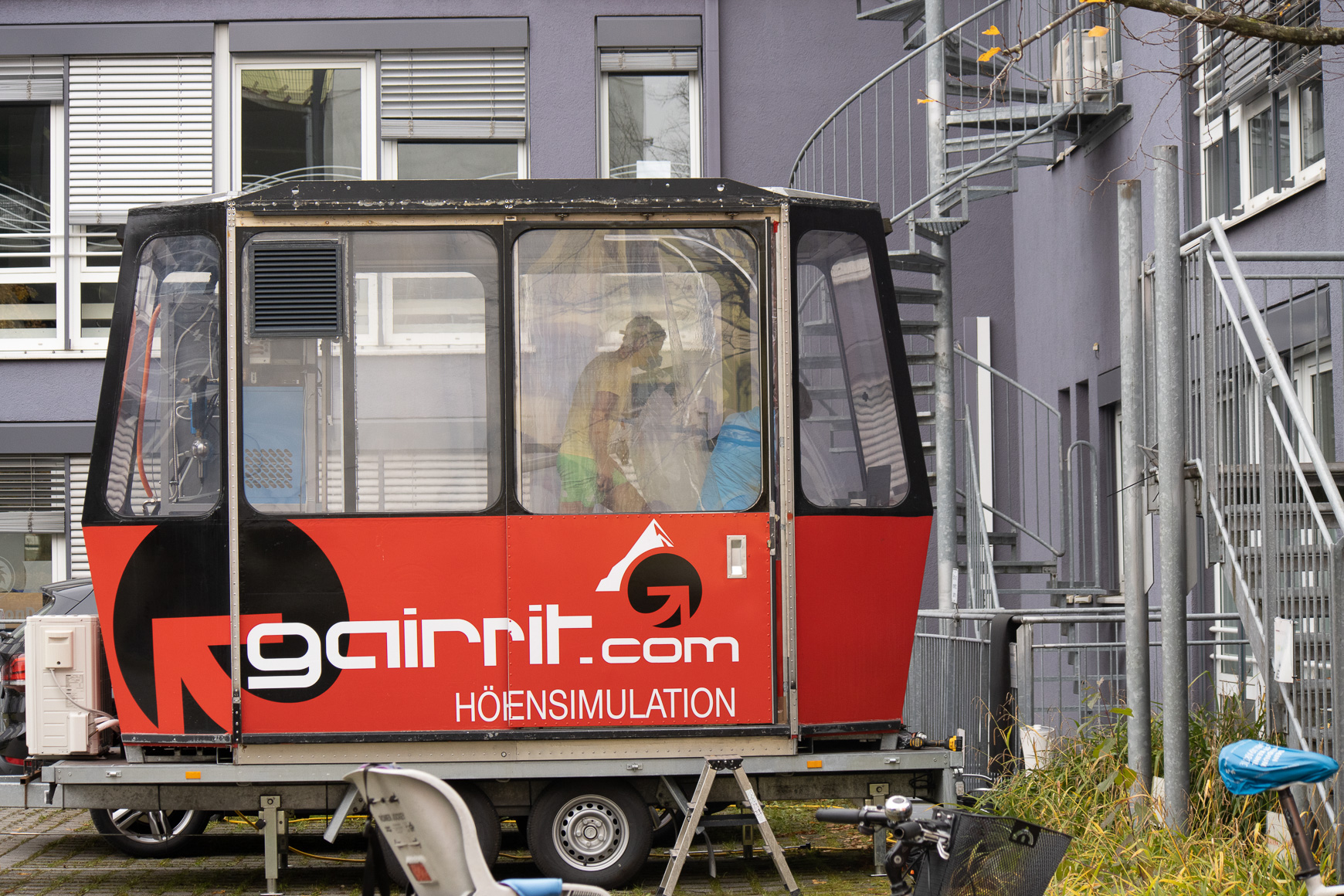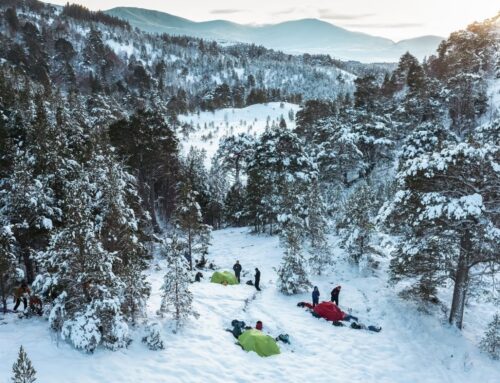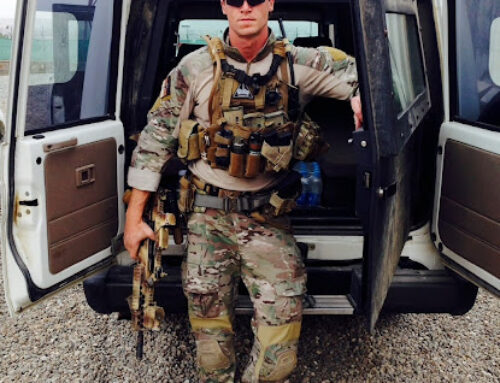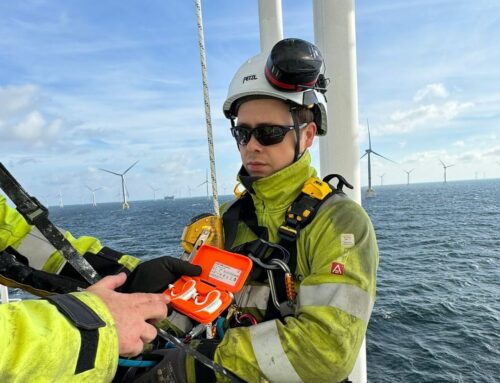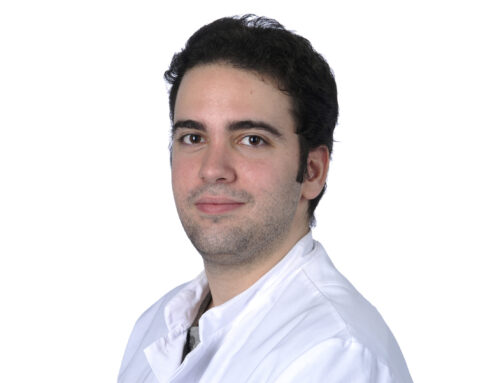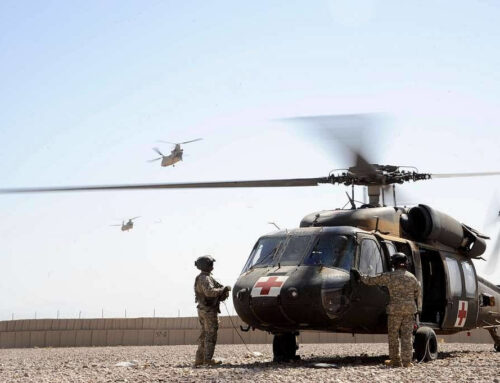Interview with altitude expert Gerrit Glomser
Whether climbing a mountain or running a marathon – in preparation for such a challenge, it can make sense to prepare not only through athletic training, but also with the help of altitude training. For more than 30 years, Gerrit Glomser has been investigating the effects of altitude on our body’s performance. His company GAIRRIT, founded in 2008, is a leading supplier of equipment for altitude training and diagnostics as well as the construction of altitude chambers. He carries out special test measurements with endurance athletes in the run-up to sporting events and supports them during the application of altitude simulation at home. In this interview he explains what he has learned so far and what role the cosinuss° in-ear sensors play.
Gerrit, how did you come to do what you do now?
By chance. In 1991 I was allowed to do a school exchange year in Colorado (USA). In the weeks following my return, I easily competed at the top of the bike race in Austria – in all categories – as well as at the international level in the junior category. So it stood to reason that the altitude I had been exposed to in the mountains of Colorado must have had an effect. At the time, of course, I wasn’t aware of it. The higher I climbed up the category ladder – from junior to amateur, through U-23 in Italy to the pros – the more my altitude training camps increased. The bases were Boulder and Allenspark in Colorado. There, my host family always had an open door for me.
What services and products does your company GAIRRIT offer?
GAIRRIT has become a full-range provider in the field of simulated altitude. From altitude diagnostics, rental of altitude simulation systems, monitoring during simulated altitude at home to plant engineering for special altitude chambers.
How can one imagine altitude training – as you offer it?
GAIRRIT stands first and foremost for simulated altitude. I am convinced that the future belongs to simulated height. It can be reproduced at any time within one’s own four walls and the altitude can be readjusted in the course of the altitude block – depending on how the organism needs the stimulus at the moment. This is not feasible terrestrially.
GAIRRIT always focuses on the user. Everything revolves around the individual reaction in combination with targeted use and this with full transparency of the data. GAIRRIT is the first and only provider of altitude training that is able to show when the customer reaches the maximum performance increase or the status of the best possible simulated pre-acclimatization at which altitude.
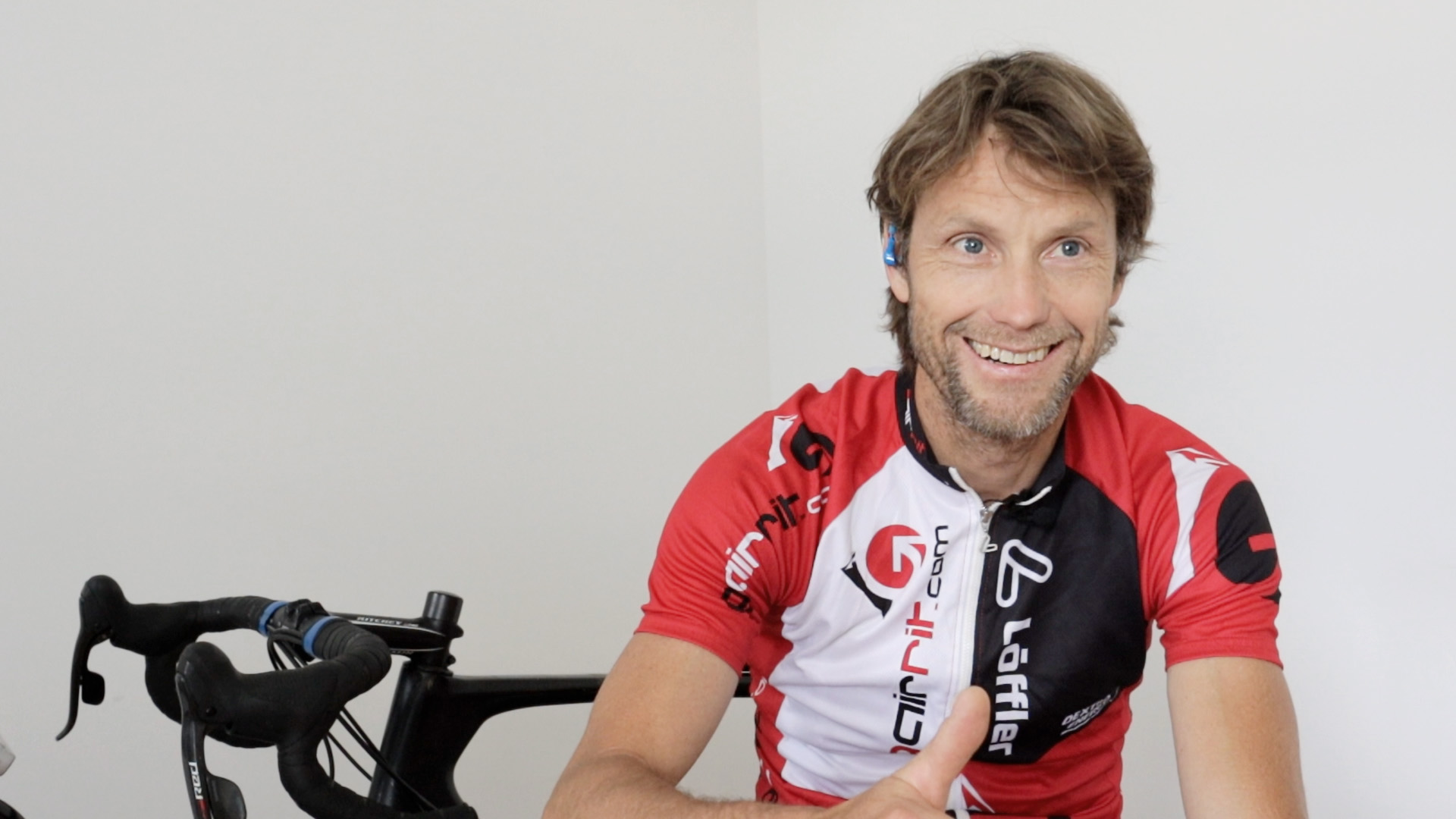
Why are altitude training and pre-acclimatization so important when planning, for example, a mountain climb or an athletic season goal?
High altitude training is generally associated with the expectation that the body’s own production of red blood cells can increase performance. The change in performance can now be easily measured after a stay at altitude. Wattage cranks on the bike identify the jump in performance, and various apps help document the increase in performance while running.
Performance on the mountain can best be defined by the meters of altitude covered per hour. These altitude meters per hour should also increase as expected after altitude training. However, not everyone reacts equally to altitude! Altitude training or pre-acclimatization per se are therefore initially less important than knowing whether one’s own organism is able to cope with the stimulus of altitude.
What vital signs do you think an endurance athlete should keep an eye on in the long term and during exercise?
In my opinion, this is a philosophical question that everyone must answer for themselves. The higher you get to the top of your performance, the more facets of your own ego you should know. It is certainly interesting to have a closer look at all the values. But not every athlete benefits equally from the same measured parameters. I always keep it like “picking the cherry out of the dough”: everyone should make as many experiences as possible, keep the measures that bring them forward and “dump” the ballast. Over time, of course, individual preferences can change. So it is always necessary to go through the world with a watchful eye.
Regardless of this, however, it is a fact that everything that has to do with altitude is reflected in pulse rate and blood oxygen saturation.
You conduct tests with athletes in your own altitude chamber to predict how they will react to possible altitude training and how much gain they can get from the altitude factor. How did you come up with this idea?
Since 2005 I have been taking care of “users of height” in all facets. From industrial climbers, filmmakers, amateur athletes, mountaineers, endurance athletes, bodybuilders, paragliders to professional athletes. Their reaction pattern is as unique as all of our fingerprints. This is quite independent of age, gender and fitness. There are no patterns. Everyone is individually different in terms of altitude response. Each user’s stress signature looks different. These aspects need to be addressed in the course of altitude application. Those who react poorly to altitude can be identified as early as testing or after a day in the altitude tent.
What is the reason for this?
This has to do with the genetic disposition that someone brings with them. Height can be “trained” to a certain extent. However, this adaptability is very limited. With my tests and monitoring, I can clearly prove that it is not due to training, but that genetic characteristics are responsible for whether someone can use altitude for themselves or not.
The special thing about my tests is that I perform them under stress. Why? I have been renting altitude generators since 2004. At that time, I had my customers regularly document their reaction pattern in the morning via pulse oximetry. I found that age, gender and fitness level had little influence on the reaction. The problem of morning rest measurements is to be sought on the one hand in the user, on the other hand in the technology used. Standardized measurement is almost impossible. Comparable values are therefore difficult to use as a measure of the response. In addition the used technology still contributes to its inaccuracy: Commercially available pulse oximeters may show a fluctuation of four percent! The only way to obtain stable values was therefore under load. Prototypical test settings confirmed this very quickly at that time and then I immediately started to refine the test procedure.
What exactly does this test procedure look like or how do these test measurements run?
In principle, I need a reference test at low altitude with – offset in time – comparative tests at simulated altitude. From this test pairing, a very good conclusion can be drawn about how well someone responds acutely to altitude and what benefit someone can derive in the long term from altitude training or pre-acclimatization.
In endurance sports, I simulate no more than 1,800 m. At this moderate altitude, I provoke each athlete sufficiently to be able to make my statements unerringly. Endurance sports and altitude are a relatively rigid combination. In 99 percent of all cases, athletes use altitude training for competitions at valley altitudes. The tests in endurance sports are classic ramp tests to the point of exhaustion.
In high-altitude mountaineering, the matrix is far more complex. It is not about performance enhancement for a valley situation, but I am confronted with different reaction mechanisms for different altitude levels. In high-altitude mountaineering, for me, it’s more about economization at each level. Everyone adapts differently to different altitude levels. It is a matter of finding out which alpinist needs which training measures or altitude interventions in order to achieve his alpine goal in the best possible way with his genetics. Of course, the tests can also show that someone is not suitable for the desired altitude in terms of altitude physiology. This can also be filtered out by my tests, i.e. where the critical altitude is in each case. This even goes so far that I can explicitly say how many liters of oxygen someone needs for which altitude in order to be able to maintain performance at an acceptable level. Furthermore, I can give clear parameters to any expedition organizer as to how the alpinist’s performance behaves at which altitudes and how this performance can be influenced by supplemental oxygen. On the mountain, it’s all about safety. In my opinion, all data known in advance therefore contributes to greater safety.
Photos: Test measurements with Gerrit Glomser (GAIRRIT) on the cosinuss° premises.
What other insights have you been able to gain from your test measurements so far?
I have long since moved on to the next development step with my company GAIRRIT. The test pairings described are the first building block of a trilogy. I validate my forecasts by measuring the complete application period and can thus adjust the forecasts more and more finely. The test pairing per se is only a representation of a moment in time. The stringing together of daily measurements results in longitudinal sections that do not exist in this way in the altitude application so far. This daily monitoring to be done by the user is limited to a minimum of time, but provides valuable data on the performance development of the individual user. Thanks to the technology and measured parameters, the accuracy of my forecasts is around 90 percent. The longitudinal sections thus help me to be even more precise in my statements.
Are there many altitude training providers that use such technically sophisticated equipment and measure multiple vital signs?
Normally, the simple rental of equipment to simulate height takes place. Here, everything is based on experience and no one can measure sufficiently. My test positions and time series analyses are in my opinion far ahead of the competition and the current time.
I work on a question until I find the answer for it. However, this requires that one deals deeply with the subject matter. If you don’t practice height out of self-interest and up to perfection and have gained experience over decades through customers, you never see the wholeness of all the necessary adjusting screws.
All the interest, all the passion I put into my products would be worth nothing, however, if companies did not also make their essential contribution to my development. I got to know cosinuss° through an advertisement ten years ago. In a trade journal, cosinuss° presented its in-ear sensor technology. There was no mention of oxygen saturation, but given the technology described at the time, I could well imagine that the implementation of this parameter would be feasible at some point. In the meantime, cosinuss° provided me with sensor technology for measuring SpO2 so that I could carry out my first tests, and these soon proved to be spot on. From then on, we intensified our partnership. Since March 2022, I have been equipping every customer with cosinuss° in-ear sensors. This makes it possible for the first time to measure a consistent mapping of the response to the set altitude stimulus. Combined with my tests and linked monitoring, I can now tell my athletes exactly a) WHEN they will reach their maximum performance increase through altitude, b) HOW long this process will take and c) WHAT altitude is necessary for this.
What are your future plans for the GAIRRIT company – and also your personal ones?
I am a perfectionist. I only ever go out with developments when I can be sure, in consultation with experts, that everything seems watertight. I still have to perfect monitoring as a feedback loop for my test pairings. The technology for this is far advanced. This makes it possible to look into the future, which enables biofeedback controlled altitude application towards the respective goal by announcing e.g. possible preparation time, goal and sleep behavior. This will have a lot to do with artificial intelligence. All the experiences I have now bring me closer to this goal.
Privately, an 8,000 m peak is on my plan. My wish, thanks to all the possibilities in advance, is to arrive at the mountain so pre-acclimatized that I can immediately climb through to the summit the day after arriving at base camp. Round trip for four days. I know it is possible.
Info-Box: The tests developed by GAIRRIT for athletes and high-altitude mountaineers
- are sport-specific.
- for the first time, provide objective figures on the subjective sensation on the mountain.
- provide information about the acute loss of power in any number of altitude levels up to 8,000m.
- provide relevant pulse ranges for the fat metabolism which changes at all altitudes.
- give insight, which output a pre-acclimatization can have.
- allow a prognosis on the duration of the optimal pre-acclimatization when the alpine goal is announced.
- allow the comparison of performance before and after pre-acclimatization (100% insight into the effectiveness of pre-acclimatization = degree of economization).
- show how targeted pre-acclimatization can slow down the genetically induced decline in performance.
